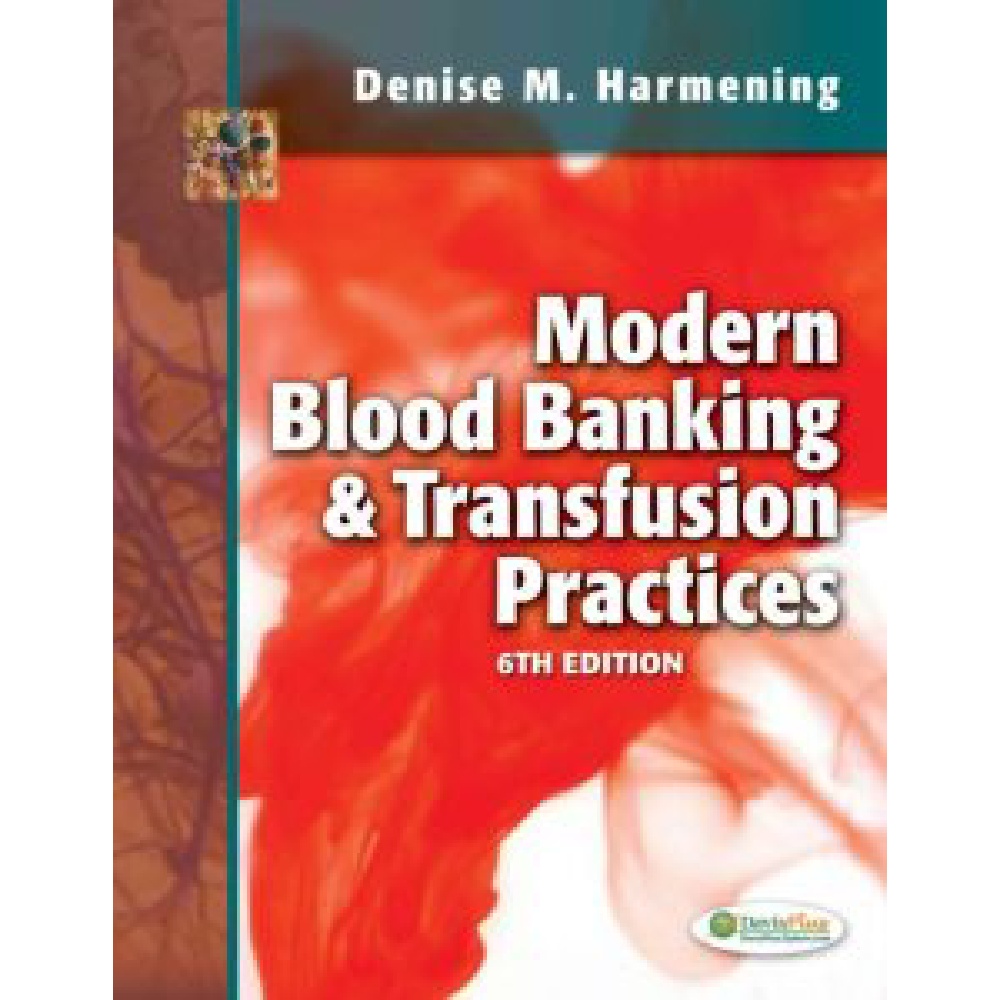Modern Blood Banking and Transfusion Practices 6th Edition by Denise M. Harmening – Test Bank
Chapter 11. Overview of the Routine Blood Bank Laboratory
Multiple Choice
Identify the choice that best completes the statement or answers the question.
____ 1. In which section of the blood bank laboratory would blood be issued for transfusion?
a. Component preparation and storage
b. Donor processing
c. Main laboratory
d. Reference laboratory
____ 2. All blood banks in the United States are regulated by what agency?
a. AABB c. CAP
b. FDA d. Joint Commission
____ 3. What test(s) are involved when a physician orders a 4-unit crossmatch on a patient?
a. IS crossmatch
b. AHG crossmatch
c. ABO, Rh, antibody screen, IS crossmatch
d. ABO, Rh, DAT, IS crossmatch
____ 4. Platelets are stored on/in a(n) ____________, which provides constant agitation.
a. incubator c. rotator
b. cryostat d. refrigerator
____ 5. Which of the following might be used to investigate a cold autoantibody?
a. Titration c. Elution
b. Rabbit erythrocyte stroma d. A2 cells
____ 6. A positive DAT may be seen in:
a. warm autoimmune hemolytic anemia.
b. cold agglutinin syndrome.
c. hemolytic transfusion reaction.
d. all of the above.
____ 7. Why are monoclonal anti-D reagents preferred over the slide test reagents?
a. They contain a low protein concentration and are not prone to false-positive reactions.
b. They contain a high protein concentration and are not prone to false-negative reactions.
c. They contain albumin, which acts as a potentiator.
d. None of the above
____ 8. Anti-Jka was identified in a donor sample. What blood products can be made from the parent unit?
a. Fresh frozen plasma (FFP) c. Packed RBCs
b. Platelets d. None
____ 9. What quantitative test is performed when the rosette test for fetal maternal hemorrhage is positive?
a. Hemoglobin electrophoresis c. Fetal screen
b. Kleihauer-Betke d. Titration
____ 10. A group O whole blood unit collected from an outside facility was needed for a group A recipient. How can packed cells be made in the shortest time possible?
a. Red blood cell sedimentation c. Vertical rotation
b. Refrigerated centrifugation d. Filtration
MULTIPLE CHOICE
1. ANS: C PTS: 1 KEY: Taxonomy Level: 1
2. ANS: B PTS: 1 KEY: Taxonomy Level: 1
3. ANS: C PTS: 1 KEY: Taxonomy Level: 2
4. ANS: C PTS: 1 KEY: Taxonomy Level: 1
5. ANS: B PTS: 1 KEY: Taxonomy Level: 2
6. ANS: D PTS: 1 KEY: Taxonomy Level: 2
7. ANS: A PTS: 1 KEY: Taxonomy Level: 2
8. ANS: C PTS: 1 KEY: Taxonomy Level: 3
9. ANS: B PTS: 1 KEY: Taxonomy Level: 1
10. ANS: B PTS: 1 KEY: Taxonomy Level: 2





Reviews
There are no reviews yet.